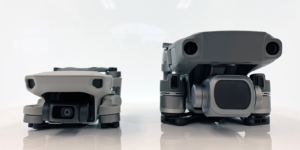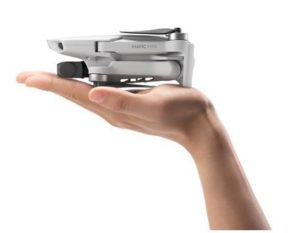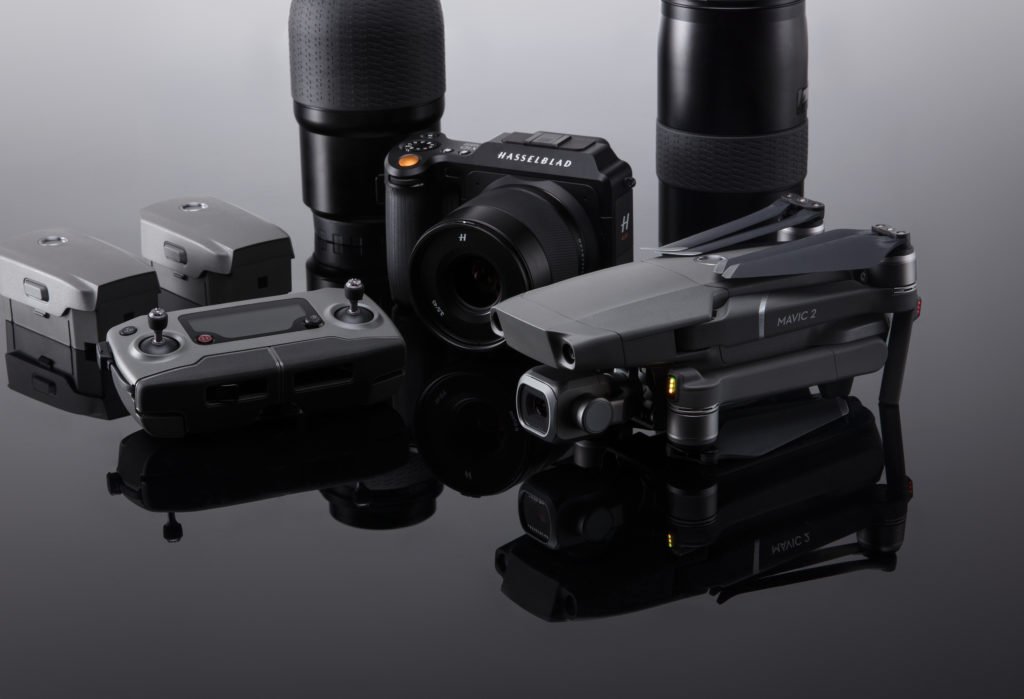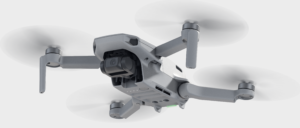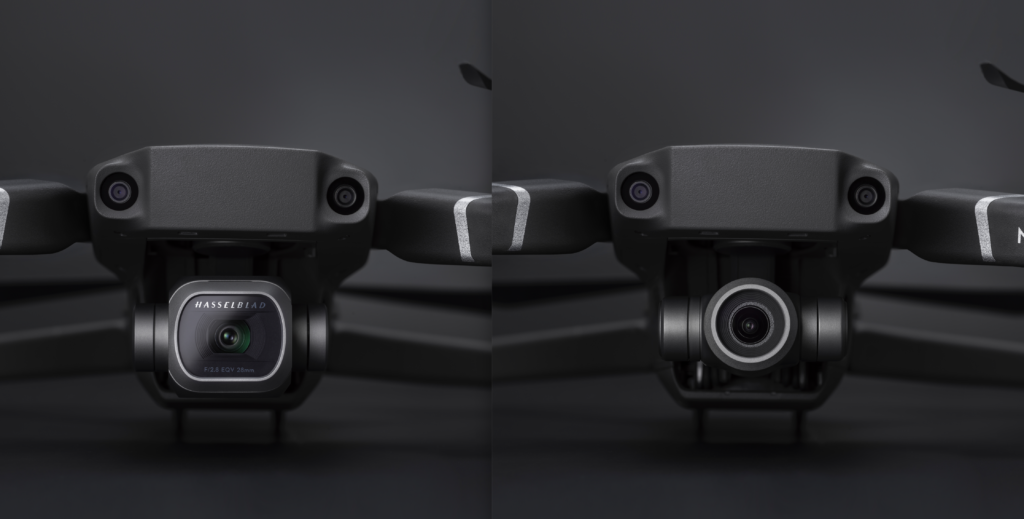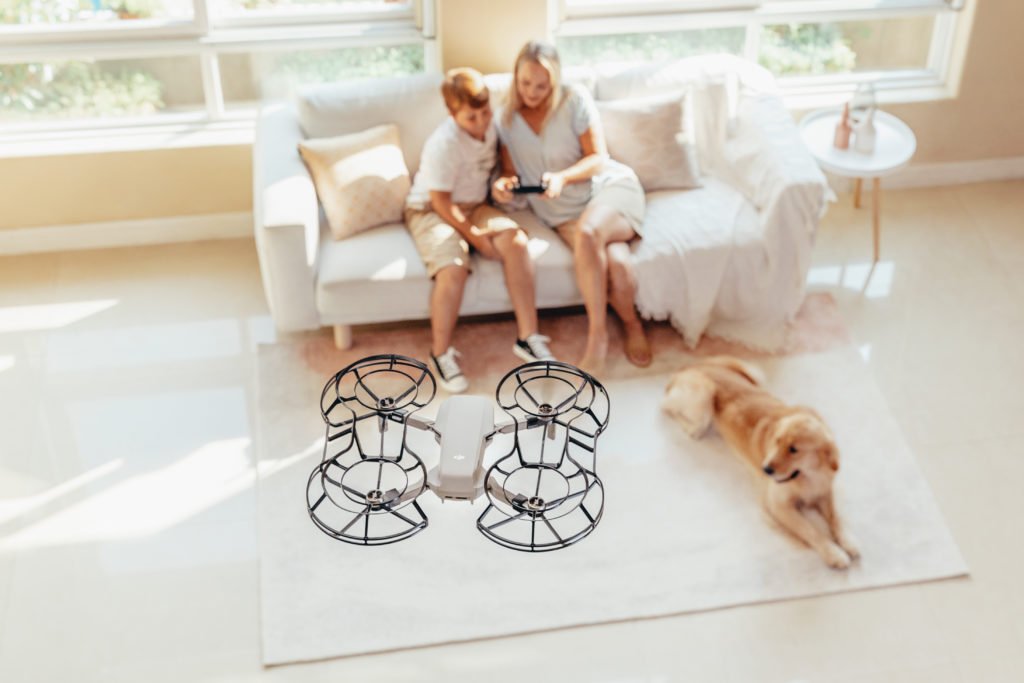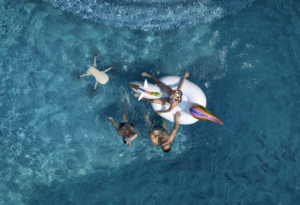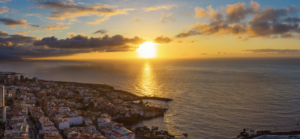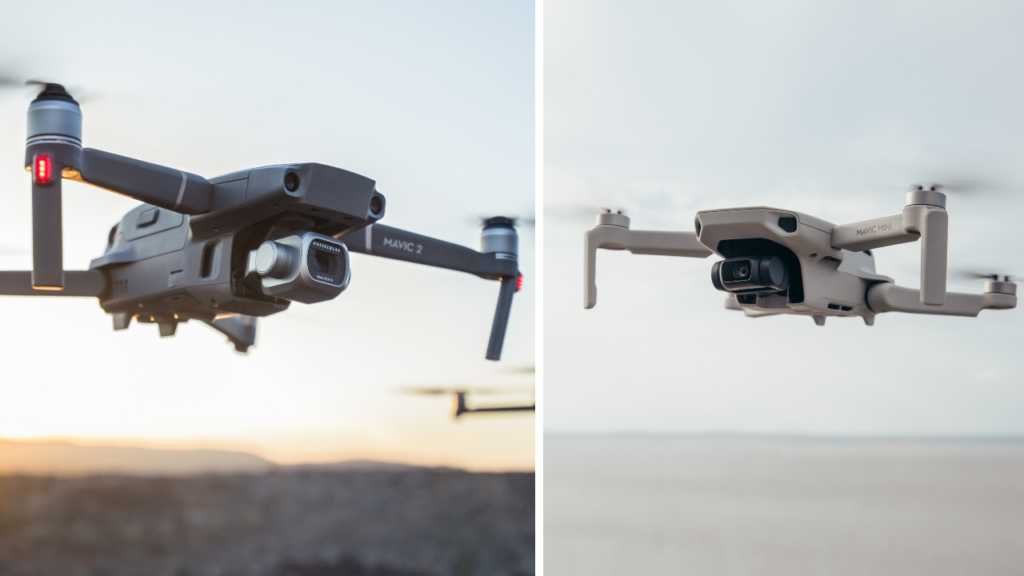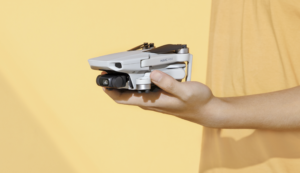DJI’s Mavic Mini has just hit the shelves. Ali Crane of DJI experts Dr. Drone explains the differences between the Mavic Mini and the Mavic 2 in detail to help you choose.
The following is a guest post by contributor Ali Crane, Content Creation Specialist for Dr Drone, Canada’s first official DJI Store specializing in drone retail, repair and customization. Images and content courtesy Dr. Drone.
With the recent reveal of the highly anticipated Mavic Mini, DJI finally introduced their first new consumer drone of 2019, over a year after the release of the now world-renowned Mavic 2. The new Mavic Mini features game-changing specs, including a weight of only 249 grams and a maximum flight time of up to 30 minutes.
With its weight being under the lowest weight class of drones for most countries, powerful specs, and foldable, ultra-compact design, the Mavic Mini could be set to dethrone the Mavic 2 as the world’s most popular consumer drone. Below we have broken down the differences between both the Mavic Mini and Mavic 2 to help you better determine which drone is the right investment for you.
Design
The Mavic Mini is DJI’s smallest and most lightweight drone ever, weighing in at only 249 grams and compact enough to fit in the palm of your hand. The aircraft features a foldable design that mimics that of the Mavic 2, and when completely folded down is about the size of a soda can. When folded, the Mavic Mini measures 140×82×57 mm (L×W×H) and when unfolded 160×202×55 mm (L×W×H). Aesthetically, the Mavic Mini features a matte, light grey colour and sleek, aerodynamic design.
Of course, the highlight of the Mavic Mini’s design is its weight, enabling users to fly the drone without having to abide by government regulations in many countries. This is a ground-breaking feature for drone enthusiasts of any level, as it gives users the option to fly in more areas that were previously restricted, without having to worry about the baggage of government rules.
The Mavic 2 series includes both the Mavic 2 Zoom and Mavic 2 Pro. Both drones feature similar aircraft designs and specifications but different cameras. The Mavic 2 aircraft features a matte dark-grey color and fold-down design. When folded down the Mavic 2 measures 214×91×84 mm and 322×242×84 mm when unfolded. When completely folded down the Mavic 2 is about the size of a water bottle and roughly twice the size of the Mavic Mini, though the overall drone is still extremely portable, compact, and easy to travel with.
Camera and Gimbal
In spite of its extremely small size, DJI equipped the Mavic Mini with a powerful 3-Axis gimbal system to keep any footage captured smooth and shake-free. The drone is capable of capturing 2.7K video at 30 fps, 12-megapixel stills and features a 1/2.3 sensor with an electronic shutter. Though the Mavic Mini lacks 4K video capabilities, the 2.7K 12-megapixel camera is perfect for beginner or casual users. One limitation for more professional users would also be that the drone can only shoot in JPEG and MP4 formats.
Both the Mavic 2 Zoom and Mavic 2 Pro feature DJI’s patented 3-Axis stabilized gimbal system. With the Mavic 2 series, users have two powerful camera options to choose from depending on their application and desired price point. The Mavic 2 Zoom is the only drone in DJI’s consumer line up that has zoom capabilities in flight, featuring 2x lossless optical zoom that can go from 24mm-48mm. The Zoom can capture stunning 4K video at 30 fps, 12-megapixel stills and features a 1/2.3” CMOS sensor. The Mavic 2 Zoom also comes with a few unique modes including Super Resolution, wherein the drone can shoot and stitch together a stunning 48-megapixel photo as well as Dolly Zoom, an effect that will enable users to zoom into a subject and distort the image outwards for a dynamic and cinematic shot.
For the Mavic 2 Pro, DJI partnered with iconic Swedish camera maker Hasselblad, to create their highest quality camera on a consumer drone to date. The Mavic 2 Pro features a camera capable of capturing 4K video at 30 fps and 20-megapixel stills in JPEG and DNG RAW. The Mavic 2 Pro also features a 1-inch CMOS sensor, the largest sensor size of any DJI consumer drone for enhanced detail, light, and colour. In comparison to the Mavic Mini and even the Mavic 2 Zoom, the Mavic 2 Pro’s camera will give users much more control over their camera parameters including shutter speed, aperture, and ISO, making it the ideal choice for those looking to use a drone for more professional endeavors.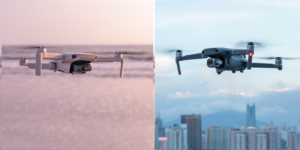
Performance
Though small in size, the Mavic Mini does not sacrifice performance. The Mavic Mini features an incredible flight time of up to 30 minutes with a fully charged battery, and a maximum range of 4 km, a ground-breaking achievement for DJI. Using an Enhanced WIFI system, the Mavic Mini will also automatically switch between 2.4GHz and 5.8 GHz frequencies. The aircraft can handle temperatures between 0° to 40°C (32° to 104°F) and up to 28.4 km/h wind speeds under warranty. Despite its extremely small and lightweight size, the Mavic Mini performs extremely well in the air. When piloting the Mavic Mini, the aircraft is very accurate and price in flight, and maintains its stability even in moderately strong wind conditions.
The Mavic 2 features a similar flight time of 31 minutes but double the range of the Mavic Mini with a range of up to 8 km. The Mavic 2 series utilizes DJI’s upgraded OcuSync 2.0 system which supports automatic switching between 2.4GHz and 5.8 GHz frequency bands to maintain the strongest connection possible with the least amount of interference. For users who may be flying in more extreme conditions or more remote areas, the Mavic 2 would be a more reliable choice as it does not rely on a WIFI transmission system like the Mavic Mini. The drone can also handle more extreme temperatures and wind speeds than the Mavic Mini including wind speeds up to 29-38 km/h and temperatures between -10°C to 40°C under warranty.
Obstacle Avoidance & Safety in Flight
One thing the Mavic Mini lacks is an obstacle avoidance system, something that has essentially become a standard feature for DJI enterprise and consumer drones. The Mavic Mini features only downward-facing sensors in combination with its GPS to keep position in the air. For added safety, users can equip the Mavic Mini with the 360° Propeller Guard which will make the drone weigh more than 250 grams. This means that in some countries drone pilots will have to obtain a license to fly with the propeller guards attached.
A highlight of the Mavic 2 is its upgraded omnidirectional obstacle avoidance system including 2 front camera sensors, two bottom facing sensors, one bottom facing infrared sensor, two rear camera sensors, one camera on the left and right side of the drone, and even one upward facing infrared sensor for safer flights in the air. The obstacle avoidance sensing in the left and right directions are only available in certain intelligent flight modes including QuickShot, Tripod, ActiveTrack, and POI. With its upgraded obstacle avoidance system, the Mavic 2 can scan its environment in real-time to better detect and avoid obstacles to ultimately provide users with safer, collision-free flights.
Intelligent Flight Modes
The Mavic Mini comes with some intelligent flight modes including four QuickShots modes, Return-to-Home, and CineSmooth Mode, but does not feature some of DJI’s most popular intelligent modes such as ActiveTrack and Waypoints. With QuickShots, users will be able to capture dynamic footage with just a tap. The QuickShots modes include Helix, Dronie, Rocket, and Circle. In CineSmooth Mode, the Mavic Mini’s speed and movement will be slowed down so that users have more control over their footage. This mode is particularly useful for flights in complex environments or tight spaces. With Return-to-Home, the Mavic Mini will automatically return to the spot it was launched from at the press of a button or when it detects that is has a low battery or has lost signal.
The Mavic 2 features a much larger selection of all of DJI’s most popular intelligent flight modes including TapFly, Point of Interest, ActiveTrack, Tripod Mode, Return-to-Home and Cinematic Mode to name just a few. Its newly upgraded ActiveTrack 2.0 is improved to generate a 3D map of its environment in real-time to better map out and predict a subject’s movements. The Mavic 2 also features six QuickShots modes so that users can capture dynamic shots with the tap of a button including Dronie, Boomerang, Circle, Rocket, Helix, and Asteroid.
Which Drone is Right for you?
Both the Mavic Mini and Mavic 2 are powerful drones in their own right delivering exceptional performance and ground-breaking specs. Each drone provides unique advantages to the user depending on what they are primarily looking to use the drone for.
If you are a beginner or casual drone enthusiast seeking a highly reliable, safe, and fun drone without having to worry about the complication of government regulations than the Mavic Mini would be a perfect choice. The drone features an incredible range and battery life for its size, and though the camera cannot shoot in 4K which could be a deterrent for some, its 2.7K 12-megapixel camera will still deliver stunning aerial footage for the average user. While it is also missing some of DJI’s most familiar features including an obstacle avoidance system or the popular ActiveTrack intelligent flight mode, the Mavic Mini still surpasses expectations when it comes to performance and ease-of-use. Overall, the Mavic Mini is the ideal drone for entry-level or recreational users who want an affordable option, and a drone for everyday use.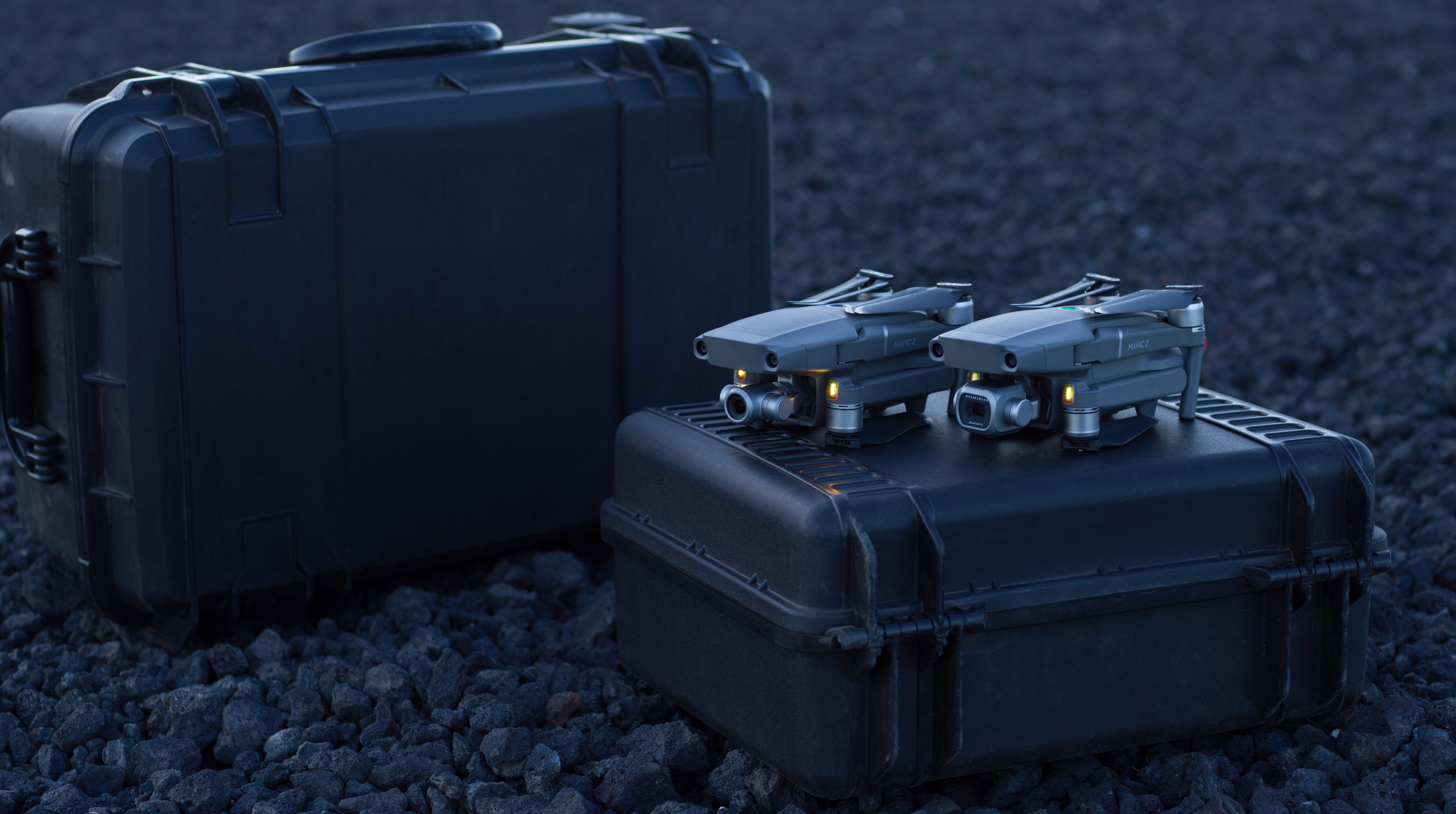
On the other hand, the Mavic 2 series is a higher-end model with powerful functions capable of providing users with semi-professional video footage. With its stronger OcuSync 2.0 Transmission system the Mavic 2 is also more ideal for users who may potentially be flying in more remote areas, landscapes, or mountains. For those looking to use a drone for more professional applications, want more options in the post-production process and the highest quality camera, the Mavic 2 Pro is the ideal choice. Meanwhile, Mavic 2 Zoom is a more affordable option for those who want to capture dynamic shots in the air or want to shoot scenes with the least amount of disturbance to the surrounding environment as possible.
Between the Mavic Mini and Mavic 2 series, drone enthusiasts of any level will be able to find the perfect companion to take their creative or professional endeavors to all new heights. Whether you are just dipping your toes into the world of drones, or ready to launch your next business venture, DJI has once again given drone lovers powerful, reliable options to take to the skies and beyond.
Guest Post by Ali Crane, Content Creation Specialist for Dr Drone, Canada’s first official DJI Store specializing in drone retail, repair and customization.
https://dronelife.com/2019/11/06/the-dji-mavic-mini-vs-dji-mavic-2-which-drone-is-right-for-you/
 Unmanned Aerial Vehicle The latest drone news
Unmanned Aerial Vehicle The latest drone news
